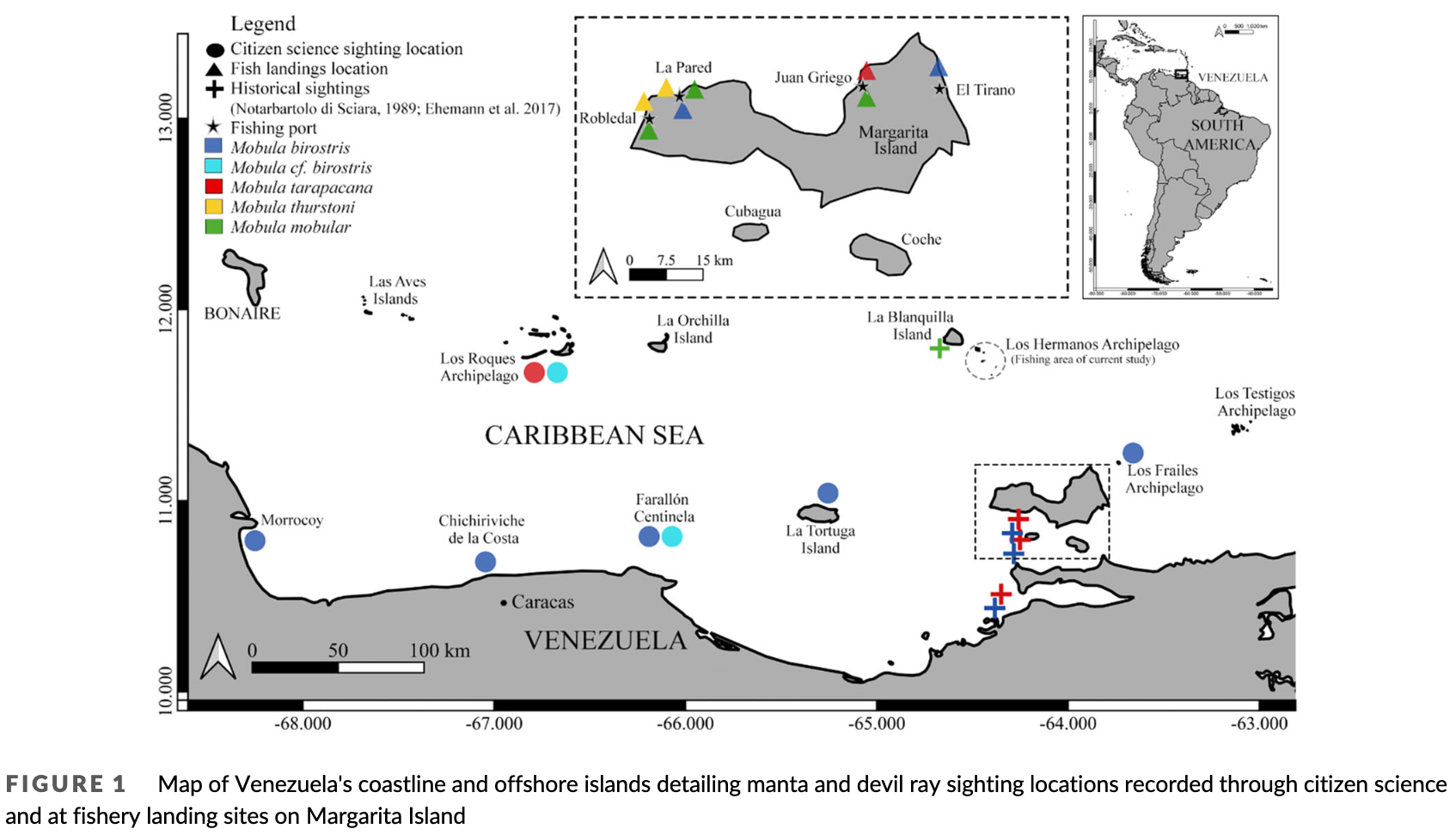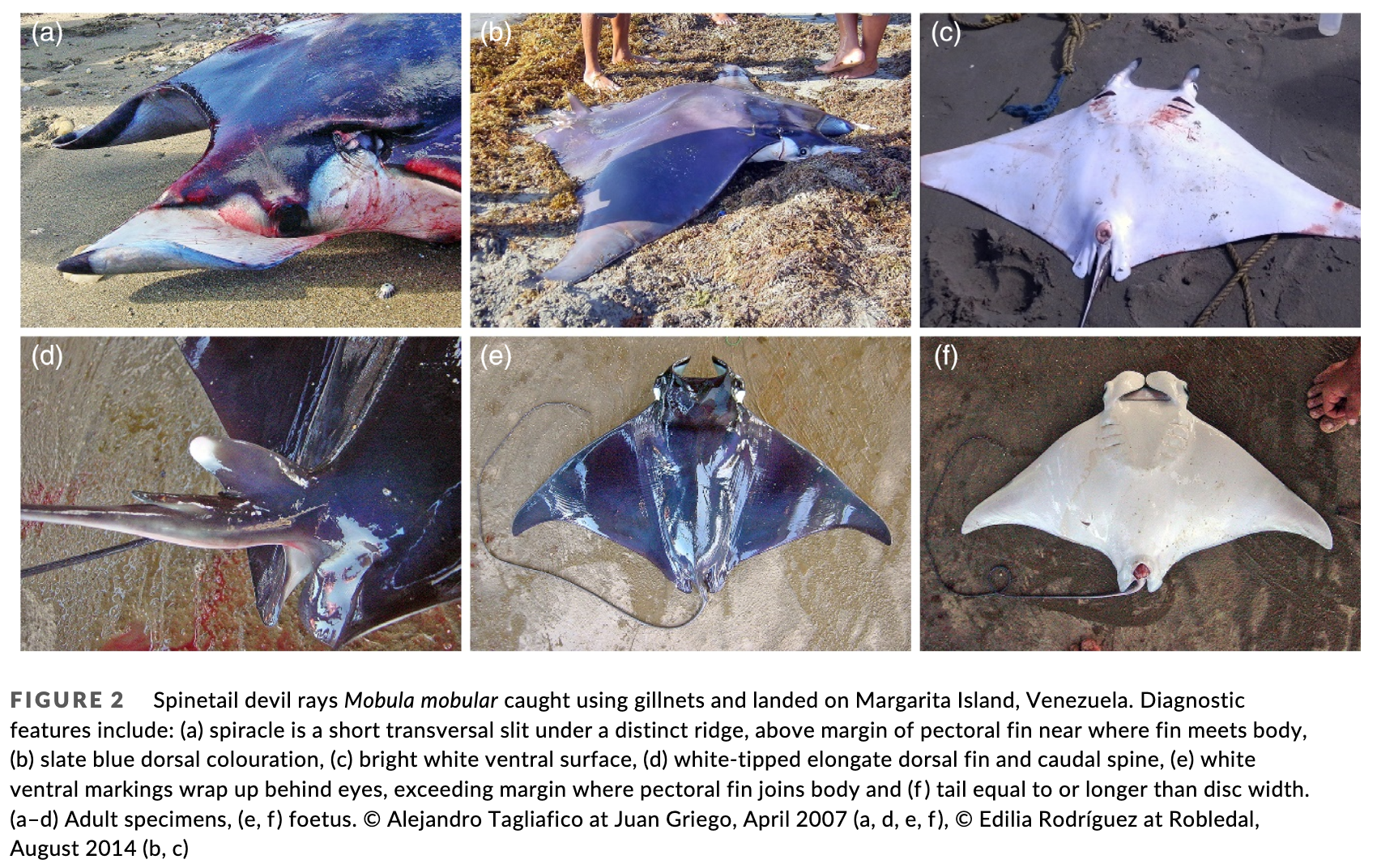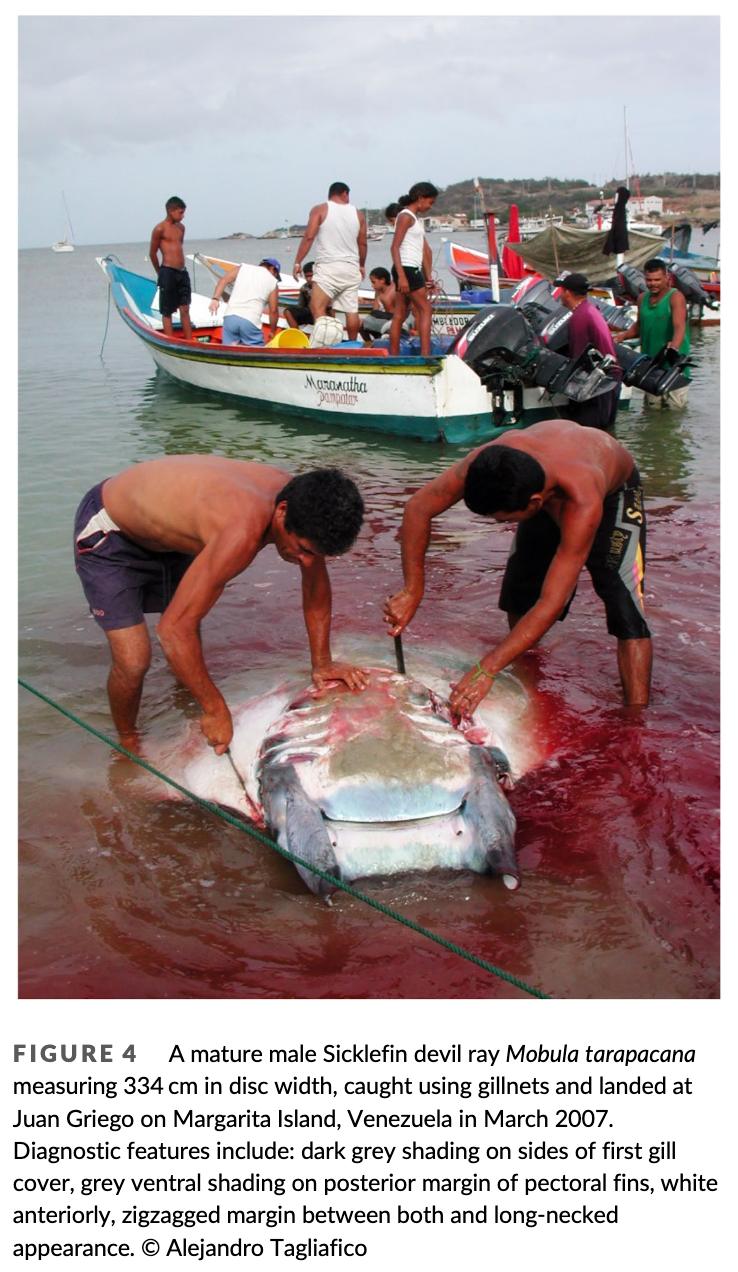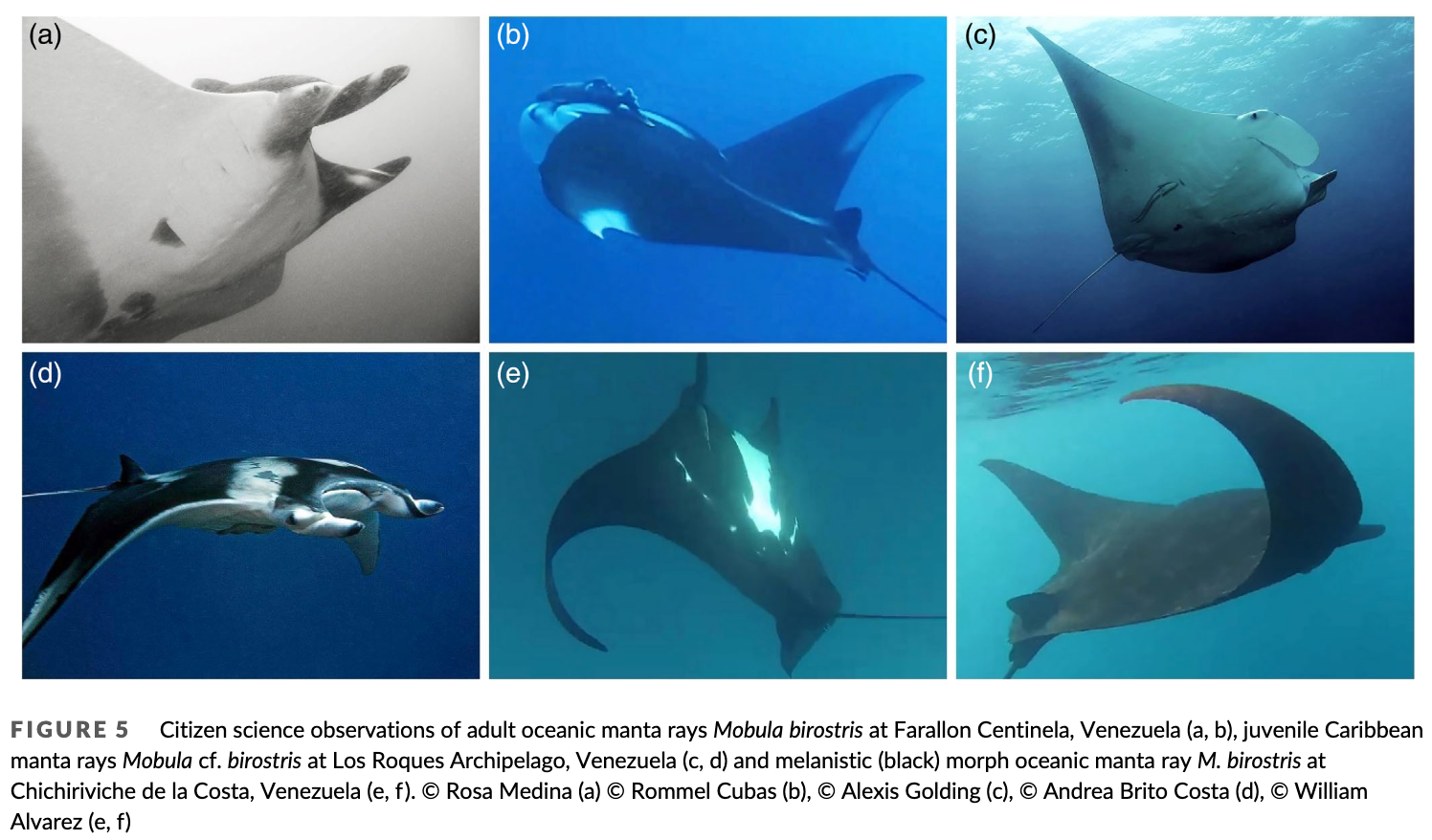Manta and devil ray species occurrence and distribution in Venezuela, assessed through fishery landings and citizen science data
May 2022
Nicolás Ehemann, Edilia Acosta-Rodríguez, Alejandro Tagliafico, Nicole Pelletier & Guy Stevens
Keywords: birostris • Caribbean Sea • hypostoma •Mobula mobular •Mobula tarapacana •Mobula thurstonir





Summary: This study was conducted to assess the species of mobulid (manta and devil) rays in Venezuela. The study collected data on fishery landings and citizen science information, and found a total of five different species, including a putative third manta ray species. Three of the species had not been previously confirmed in Venezuela. The study also found that Venezuela provides important habitat for threatened mobulid rays. One previously reported species, Atlantic pygmy devil ray (M. hypostoma), was not confirmed in this study due to misidentifications in previous publications.
Abstract
“Manta and devil rays (collectively mobulids) belong to the monogeneric Mobulidae, which currently comprises 10 species, including a putative third manta ray species (Mobula cf. birostris). These large planktivorous rays are distributed throughout the tropical and subtropical oceans of the world. To date, six mobulid species are reported for the western Atlantic Ocean and the Caribbean Sea, three of which had previously been reported in Venezuela (Mobula birostris, Mobula tarapacana and Mobula hypostoma). A preliminary assessment of fishery landings and citizen science data was conducted to further the scientific knowledge of mobulid species in Venezuela. Fisheries landing data were collected at Margarita Island between 2006 and 2007, and again in 2014. Data mining of internet search engines and social media platforms spanning the past two decades was also conducted. A total of 117 individuals of five mobulid species were recorded: Mobula sp. (n = 27), M. birostris (n = 36), M. tarapacana (n = 3), Mobula mobular (n = 26), Mobula thurstoni (n = 14) and M. cf. birostris (n = 11). The latter three species are the first confirmation of these species in Venezuela. The authors found no records of the previously reported M. hypostoma during this study. Although the occurrence of M. hypostoma in Venezuela remains possible because of the broad regional range of this species, its current presence in Venezuela is invalidated given the repeated misidentifications which have occurred in previous publications. The results of this study increase the number of reported mobulid ray species in Venezuela to five (excluding M. hypostoma). The overall data from juvenile manta rays and pregnant M. mobular and M. thurstoni recorded in this study, combined with the occurrence of all but one species of mobulid ray found in the western Atlantic Ocean, suggest Venezuela provides important habitat for this threatened family of rays.”
Infographics
Author Affiliation
Instituto Politécnico Nacional–CentroInterdisciplinario de Ciencias Marinas(CICIMAR-IPN)
Universidad de Oriente–Escuela de Ciencias Aplicadas del Mar Núcleo Nueva Esparta, Calle Principal
Proyecto Iniciativa Batoideos (PROVITA), Calle La Joya con Avenida Libertador, Unidad Técnica del Este
National Marine Science Centre, Southern Cross University
The Manta Trust

